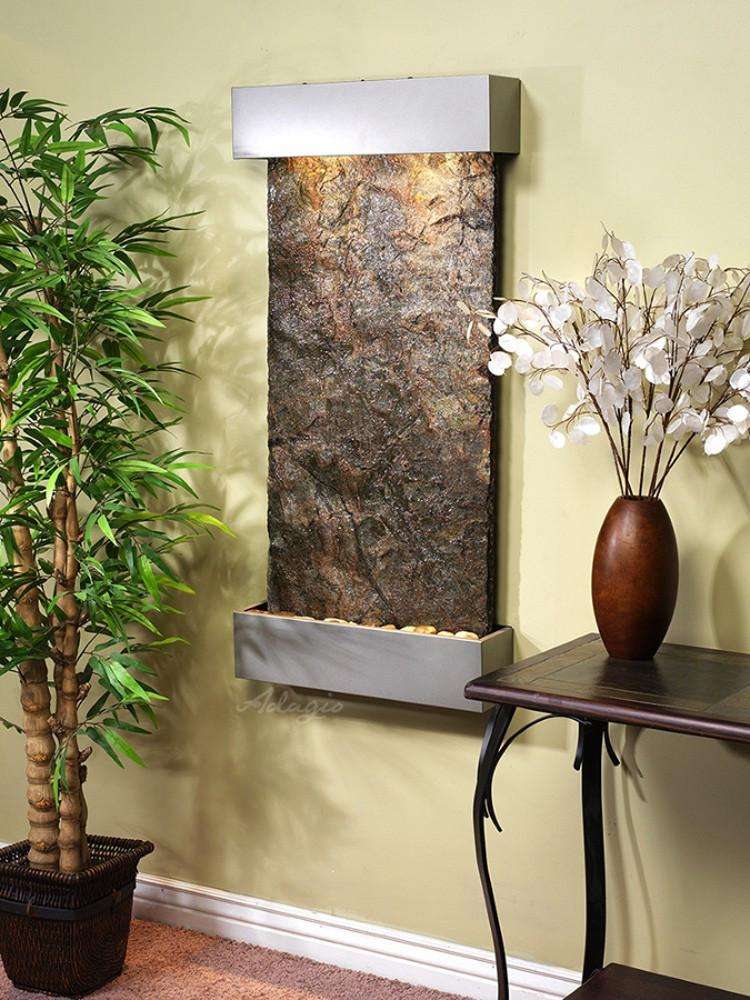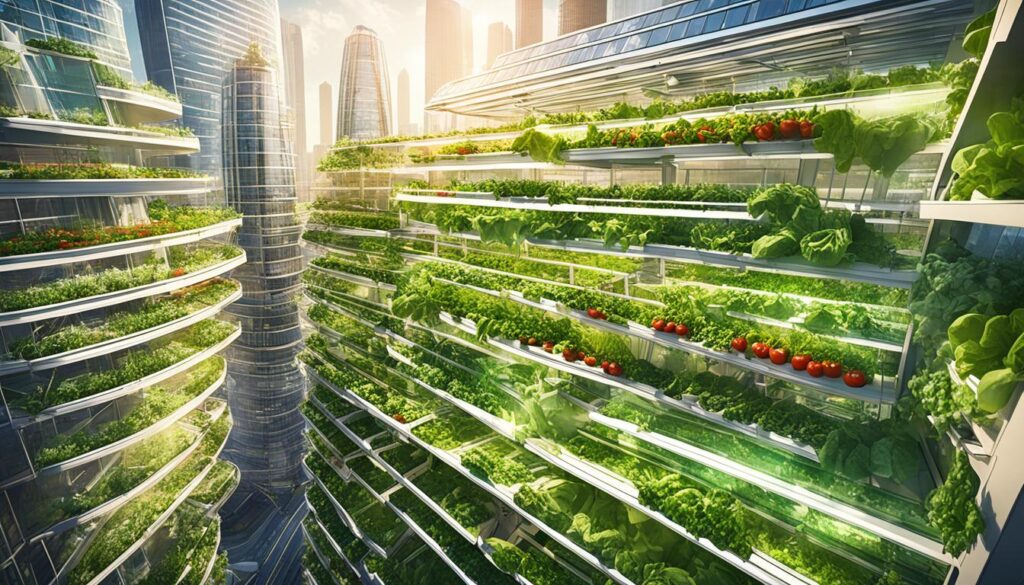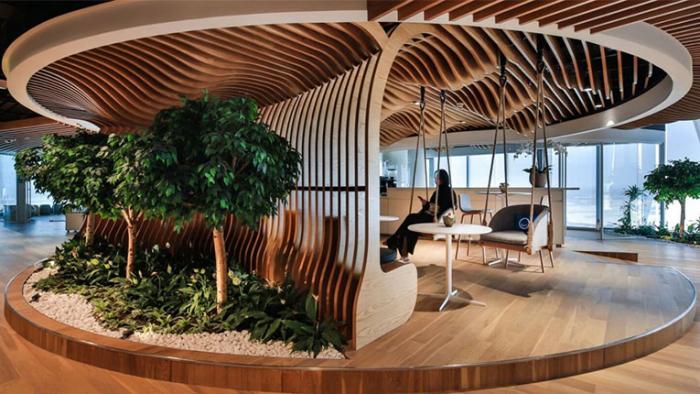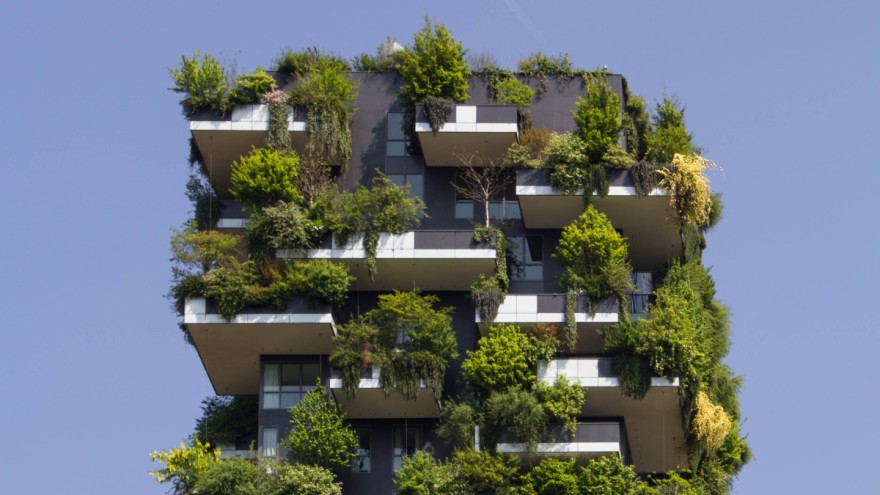Water Features in Office Spaces: Benefits and Best Practices.
Incorporating water features into office environments is not merely a design trend; it represents a strategic initiative aimed at enhancing employee well-being and productivity.
From tranquil indoor fountains to vibrant aquatic plants, these elements serve to not only beautify the workspace but also to cultivate a calming atmosphere that fosters creativity and mitigates stress.
This article examines the benefits of water features, identifies appropriate types for office settings, and provides essential guidance for selecting and maintaining them, thereby ensuring that the workplace is both functional and inviting.
Why Should Offices Have Water Features?
.jpg_00.jpeg)
The incorporation of water features into office spaces has emerged as a crucial aspect of contemporary office design. These features not only enhance the aesthetic appeal of the workspace but also play a significant role in promoting employee well-being and improving productivity.
Elements such as indoor fountains, water walls, and reflective surfaces bring the calming effects of nature indoors, facilitating stress reduction and fostering a serene environment. By integrating natural elements within the corporate setting, organizations can establish relaxation zones that stimulate creativity and enhance air quality, positioning water features as an essential component of biophilic design and sustainable architecture.
What Are the Benefits of Having Water Features in Office Spaces?
Water features in office spaces provide numerous benefits that significantly enhance employee well-being and overall productivity. The calming sound of water not only fosters a soothing atmosphere but also plays a crucial role in stress reduction, which is essential for maintaining workplace harmony and improving employee satisfaction.
These features contribute to an inviting ambiance, enhance workplace aesthetics, and promote creativity, thereby driving innovation within teams. Additionally, the presence of water features can improve air quality and humidity control, directly benefiting employee health and fostering a more productive work environment.
Research indicates that employees working in environments with water features report higher levels of job satisfaction and reduced stress levels, which can contribute to a significant decrease in absenteeism. For instance, a technology firm in San Francisco that incorporated a tranquil indoor fountain observed a 25% increase in employee engagement scores.
This connection with nature, even in a bustling office setting, stimulates creative thinking, enabling teams to approach challenges from fresh perspectives. By engaging in brief moments of mindfulness—whether by listening to the sound of trickling water or taking a short break to appreciate a garden pond—employees can recharge, leading to improved focus and enhanced performance in their tasks.
What Types of Water Features are Suitable for Office Spaces?
When evaluating the integration of water features into office environments, a variety of types can be employed to accommodate different design preferences and spatial dynamics.
Common water feature options include indoor fountains, wall-mounted installations, tabletop features, and aquatic plants, each providing distinct aesthetic appeal and functional advantages.
By carefully selecting water features that align with the corporate identity and principles of design integration, organizations can enhance the overall ambiance of the office and improve the employee experience.
This approach fosters a more tranquil and inspiring workspace that promotes relaxation and creativity.
1. Indoor Fountains
Indoor fountains are among the most sought-after types of water features for office environments, recognized for their calming effects and aesthetic value. These fountains not only provide the soothing sound of flowing water, which can significantly diminish visual noise and foster a tranquil atmosphere, but they also serve as striking focal points in office design.
Depending on their design and placement, indoor fountains can enhance the overall ambiance of the office while contributing to employee satisfaction and well-being.
A variety of styles of indoor fountains are available, ranging from wall-mounted designs to free-standing models that can accommodate any office size or layout. Wall-mounted options are particularly advantageous for space-saving while adding an element of sophistication, whereas larger floor fountains can function as statement pieces in spacious lobbies.
It is essential to consider maintenance aspects such as regular cleaning and water refilling to ensure optimal functionality; however, the benefits include improved air quality and reduced stress levels. The integration of these features can imbue workspaces with a sense of tranquility, leading to enhanced focus and creativity, thereby making them a valuable addition to any modern office environment.
2. Wall-Mounted Water Features
Wall-mounted water features represent an excellent solution for offices with limited space, offering an innovative method to incorporate the calming effects of water without compromising valuable floor space. These designs not only enhance visual interest through their unique aesthetics but also align with a minimalist design philosophy, facilitating the creation of creative office environments that prioritize both functionality and beauty.
By employing wall-mounted options, organizations can foster an inviting atmosphere that encourages employee engagement and enhances overall workplace harmony.
The versatility of these features allows them to integrate seamlessly into a variety of design themes, ranging from contemporary and industrial to classic and rustic, making them suitable for any office decor. Beyond their aesthetic appeal, wall-mounted water features confer significant benefits, including the improvement of air quality through increased humidity and air purification, thereby contributing to a healthier indoor environment.
Moreover, the soothing sound of flowing water serves as a natural acoustic barrier, effectively reducing stress and blocking distracting noises, which ultimately leads to enhanced focus and productivity among employees.
3. Tabletop Water Features
Tabletop water features present a sophisticated and adaptable solution for enhancing office environments, enabling organizations to seamlessly integrate the calming presence of water into individual workstations or communal relaxation areas.
These compact designs can positively affect employee well-being by providing a tranquil sensory experience, which is crucial for alleviating stress and enhancing concentration. By strategically positioning tabletop water features in high-traffic areas, companies can substantially improve the overall office ambiance and create welcoming spaces conducive to team collaboration.
These features are available in a variety of styles and materials, facilitating alignment with an office’s existing aesthetic. The gentle sound of flowing water can stimulate creativity, promoting innovative thought and cultivating an environment where employees feel inspired to explore new ideas.
Additionally, incorporating tabletop water features can serve as conversation starters among colleagues, thereby strengthening team cohesion and enhancing workplace relationships.
Ultimately, their careful placement not only beautifies the workspace but also contributes to a healthier, more motivated workforce, demonstrating that even small additions can yield significant impacts on productivity and morale.
4. Aquatic Plants
.jpg_01.jpeg)
Incorporating aquatic plants into office spaces not only adds a natural element to the environment but also enhances the overall indoor ecosystem, thereby promoting environmental sustainability. These types of water features can thrive in various settings, providing visual interest and establishing a direct connection to nature, which is essential for employee motivation and satisfaction.
By integrating aquatic plants with existing water features, organizations can create unique spaces that foster tranquility and improve air quality, ultimately leading to enhanced employee well-being and productivity.
Selecting species such as peace lilies, snake plants, or water lettuce can be particularly advantageous, as they require minimal maintenance while still offering striking visual appeal. The care for these plants typically involves ensuring they receive appropriate light and water conditions, with some species thriving even in low-light environments.
Strategically placed aquatic plants can complement fountains or fish tanks beautifully, creating serene focal points that promote relaxation.
The incorporation of biophilic design through these natural elements not only enhances the aesthetic appeal of the space but also strengthens employees’ connection to nature, which has been shown to reduce stress and improve cognitive function.
By prioritizing such designs, workplaces can effectively foster a healthier and more engaging atmosphere.
How to Choose the Right Water Feature for Your Office?
Selecting the appropriate water feature for an office setting necessitates meticulous consideration of several factors, including available space, maintenance requirements, and the overall aesthetics and style of the office design.
Each type of water feature serves unique functions and can influence office productivity and employee well-being in different ways. By carefully evaluating these elements, organizations can choose features that not only enhance the visual appeal of corporate spaces but also foster a tranquil environment that promotes employee engagement and satisfaction.
1. Consider the Space Available
When selecting a water feature for an office environment, it is imperative to assess the available space to ensure optimal placement and effective utilization. Various types of water features, including indoor fountains and wall-mounted options, differ in size and spatial requirements. Therefore, it is essential to choose a feature that integrates seamlessly into the office design and overall spatial planning.
Proper consideration of space guarantees that the water feature fulfills its intended purpose without overwhelming the surroundings or generating noise disturbances that could negatively impact productivity.
Evaluating the dimensions and layout of the office encompasses not only measuring the physical area but also understanding how the feature interacts with existing furniture and workflow. It is crucial to balance the size of the selected water feature with the surrounding space; a feature that is overly large may create a cramped atmosphere, while one that is too small might go unnoticed.
This deliberate approach can enhance employee engagement by cultivating a serene environment, reducing stress, and contributing positively to the overall aesthetic. Furthermore, the placement of the water feature can influence traffic flow, making it prudent to position it in a manner that encourages interaction without disrupting daily activities.
2. Think About Maintenance and Upkeep
Maintenance and upkeep are critical factors to consider when selecting a water feature for an office environment, as they have a direct impact on water quality and the overall health and satisfaction of employees. Different types of water features present varying maintenance requirements, ranging from routine cleaning to the management of water circulation, humidity control, and water conservation strategies.
A comprehensive understanding of these specific maintenance needs is essential in any office setting. For example, fountains typically require weekly cleaning to prevent algae accumulation, whereas larger ponds may necessitate seasonal maintenance procedures to manage aquatic plants and maintain balanced water chemistry.
It is imperative to choose options that are user-friendly and accompanied by clear maintenance guidelines and necessary tools for ease of care. Integrating maintenance planning into the overall design strategy not only enhances the aesthetic value of the workspace but also ensures that water quality remains optimal, thereby fostering a refreshing atmosphere that is beneficial to all.
3. Consider the Aesthetics and Style of Your Office
When evaluating the aesthetics and style of an office environment, it is imperative to select a water feature that aligns with the overall design and corporate identity. The appropriate water feature not only enhances the visual appeal of the workspace but also embodies the organization’s values and commitment to employee well-being and workplace wellness.
By incorporating elements that resonate with a nature-inspired interior design, companies can cultivate calming environments that promote relaxation, creativity, and employee engagement.
In the selection process of a water feature, it is essential to consider the prevailing design trends within the workspace. For example, a sleek, minimalist water wall can complement a contemporary office characterized by clean lines and monochromatic color schemes, whereas a rustic fountain may enhance an industrial-style setting by introducing warmth and texture.
Furthermore, the choice of material—be it glass, stone, or metal—should correspond with the overall decor to achieve a cohesive visual experience.
Ultimately, a thoughtfully positioned water feature not only serves as a focal point but also inspires collaboration and innovation among employees.
What Are the Best Practices for Incorporating Water Features in Office Spaces?
Incorporating water features into office spaces necessitates adherence to best practices to optimize their benefits and ensure a positive impact on employee satisfaction and office productivity.
Key considerations include strategic placement of these features in high-traffic areas, as well as an assessment of their acoustic benefits, air quality improvement, and maintenance requirements.
Implementing these practices is vital for cultivating a harmonious workspace that enhances employee well-being and fosters effective communication and team collaboration.
1. Place Them in High-Traffic Areas
.jpg_10.jpeg)
Incorporating water features in high-traffic areas of an office can significantly enhance employee engagement and cultivate a sense of tranquility within bustling environments. By strategically positioning these features in locations where employees frequently gather or pass through, organizations can create calming moments that promote workplace harmony and improve overall office productivity.
Thoughtful placement of these features not only serves as a visual focal point but also encourages team collaboration and effective communication among employees.
Optimal locations for these installations include areas near the reception desk, communal break rooms, and spacious hallways. When integrated into these key spots, water features can provide a refreshing escape from daily stresses, enabling employees to recharge and refocus.
This strategic placement can also lead to improved morale, as the soothing sound of flowing water promotes relaxation and sparks creativity. Managers may observe a positive shift in team dynamics, as shared moments by these features can stimulate conversations and strengthen relationships among colleagues, thereby fostering a more cohesive work environment.
2. Consider the Sound and Noise Level
When integrating water features into office spaces, it is essential to consider the sound and noise levels they produce, as these factors significantly influence the overall workplace atmosphere.
The acoustic benefits of water features, such as the gentle sound of flowing water, can provide calming effects that enhance the sensory experience for employees. It is imperative to ensure that the sound level is appropriate for the surrounding environment, thus enabling a peaceful yet productive ambiance.
Achieving the right balance between sound and tranquility is vital for fostering creativity and focus among team members.
Different types of water features, including tabletop fountains, wall-mounted waterfalls, and small ponds, display various sound profiles that can affect the energy of a workspace.
For instance, the soft trickle of a tabletop fountain may create a subtle background soothing effect, while the rhythmic splashes of a pond can invigorate the atmosphere.
By carefully selecting and positioning these features, one can cultivate a harmonious acoustic experience that not only enhances the aesthetic appeal of the office but also promotes tranquility and productivity among employees.
3. Use Appropriate Lighting
The utilization of appropriate lighting in conjunction with water features can significantly enhance the overall office ambiance and aesthetic appeal. Properly designed lighting effectively highlights the beauty of water elements, creating dynamic visual interest and fostering a tranquil environment that contributes to employee well-being and relaxation.
By integrating contemporary design trends with effective lighting strategies, organizations can elevate the impact of water features and cultivate inviting spaces that promote relaxation and creativity.
Various lighting styles play a crucial role in achieving the desired effect; for instance:
- Soft, warm lighting may establish a serene atmosphere suitable for calming water fountains.
- Vibrant, colored lighting can invigorate a modern water wall, adding excitement and energy.
- Spotlights can effectively draw attention to key water features.
- Submerged LED lights can create enchanting reflections and enhance the dynamic movement of water.
These deliberate lighting choices not only enhance visual appeal but also significantly impact workplace aesthetics, ensuring a well-rounded environment that balances relaxation with productivity.
4. Keep Them Clean and Well-Maintained
To ensure that water features positively contribute to office environments, it is imperative to maintain them in a clean and well-kept condition, as this directly affects water quality and employee health. Regular maintenance routines are essential for preventing issues such as algae accumulation and unpleasant odors, which can undermine the calming effects, overall workplace harmony, and productivity boosts that water features are designed to promote.
By prioritizing maintenance, organizations can enhance the longevity and effectiveness of their water features while fostering a healthy and inviting work environment.
To achieve this, specific maintenance tasks should be performed consistently. A cleaning schedule of at least once a week is recommended for smaller features, while larger installations may necessitate more frequent attention.
- Routine water quality assessments are crucial to ensure clarity and prevent chemical imbalances; this includes testing pH levels and ensuring adequate filtration.
- Additionally, incorporating natural additives or aquatic plant life can help establish a balanced ecosystem.
A well-maintained environment is likely to make employees feel more energized and content, thereby promoting increased productivity and overall job satisfaction. Ultimately, consistent maintenance not only preserves the aesthetic integrity of water features but also contributes significantly to the well-being of the staff.
5. Incorporate Them into the Overall Design of Your Office
Integrating water features into the overall design of your office involves considering various design elements, such as ergonomics, natural aesthetics, and sustainable design. This holistic approach ensures that water features complement the existing office layouts and enhance the visual appeal of the workspace.
Incorporating natural elements like water features into your office design can significantly improve employee well-being by reducing stress and promoting relaxation. Additionally, thoughtful integration of these features into the workspace can boost employee productivity and creativity, fostering a more innovative and engaging work environment.
By carefully considering the placement and design of water features, organizations can create a cohesive and aesthetically pleasing office space that supports both employee satisfaction and overall corporate social responsibility.
Integrating water features into the overall design of office spaces is essential for creating a cohesive and inviting workspace that aligns with corporate identity. Thoughtful integration of these elements ensures that water features enhance the office ambiance while promoting employee engagement and employee satisfaction.
By considering both the aesthetic appeal and functional roles of water features within the broader commercial design strategy, organizations can develop environments that inspire creativity and foster collaboration among team members, emphasizing workplace wellness and productivity.
These features can range from serene indoor fountains to reflective pools, all designed to harmonize with other design elements such as lighting and furniture, contributing to the overall aesthetics. For example, a technology company’s open-plan layout may benefit from a sleek, minimalist water wall that serves as a striking focal point while providing calming sounds that reduce stress levels and enhance tranquility.
Research indicates that offices incorporating natural elements, such as water features and biophilic design, experience a significant boost in workplace morale, leading to improved focus and productivity. By embracing these natural components, companies can further reinforce their corporate identity, effectively blending aesthetics with a commitment to employee well-being and employee health.
Frequently Asked Questions
What are the benefits of having water features in office spaces for employee productivity and stress reduction?
.jpg_11.jpeg)
Water features in office spaces have numerous benefits, including reducing stress and anxiety, improving air quality and humidity control, and creating a more aesthetically pleasing environment that supports employee retention.
Which types of water features are best for office spaces?
The best types of water features for office spaces are those that are low maintenance, such as fountains or wall-mounted waterfalls.
How do water features improve air quality in office spaces?
Water features can help improve air quality by releasing negative ions, which can counteract the positive ions emitted from electronic devices and improve air purification.
What are some best practices for incorporating water features into office spaces?
Some best practices for incorporating water features into office spaces include ensuring proper maintenance and cleaning, selecting a suitable size and location, considering the overall design and aesthetics of the space, and incorporating sound masking techniques to minimize distractions.
Can water features in office spaces be used as a form of relaxation or stress relief?
Yes, water features in office spaces can serve as a form of relaxation and stress relief, as the sound and sight of running water has been shown to have a calming effect on the mind and body.
Are there any potential downsides to having water features in office spaces?
While the benefits of water features in office spaces are numerous, some potential downsides include the cost of water installation, sourcing materials, and maintenance, as well as the potential for noise disturbance in a quiet working environment.

I’m Bruno, an architect with a deep passion for Biophilic Design in Urban Architecture. Throughout my career, I’ve focused on integrating natural elements into urban planning, and I created this site to share my insights and foster a deeper understanding of how biophilic principles can significantly enhance urban living. Dedicated to sustainable development, I continually explore innovative design solutions that promote both environmental and human well-being in city landscapes.














Publicar comentário